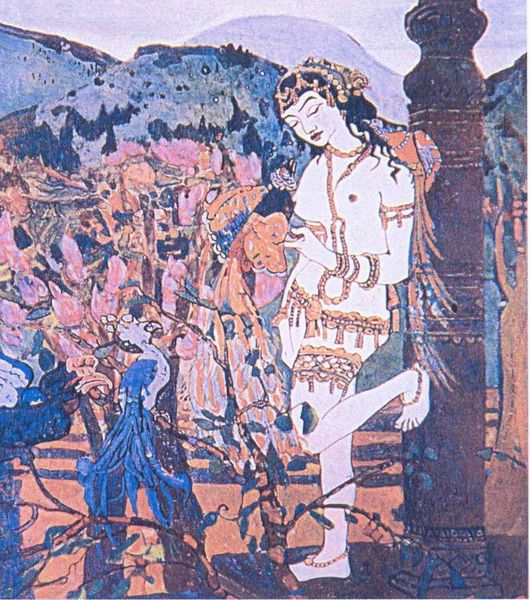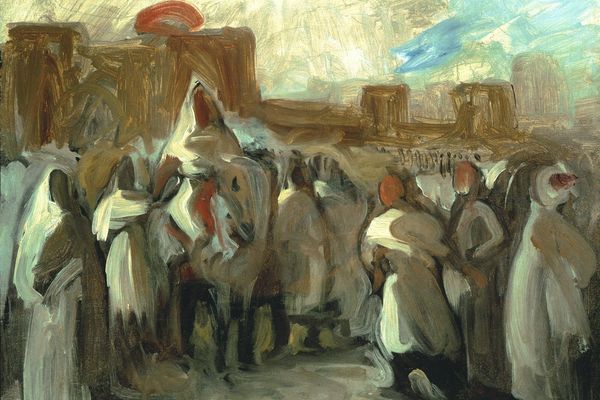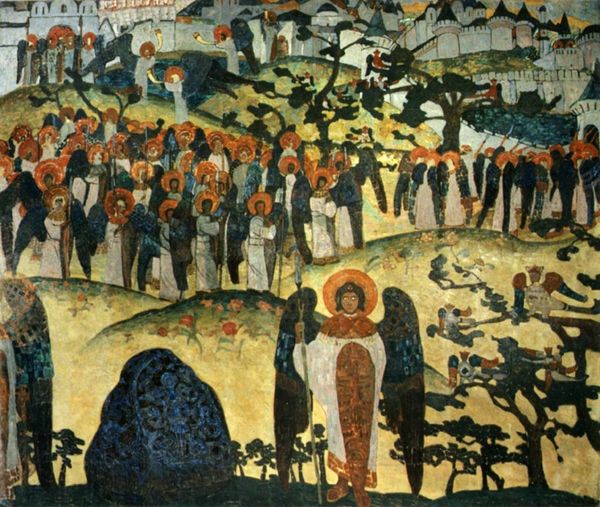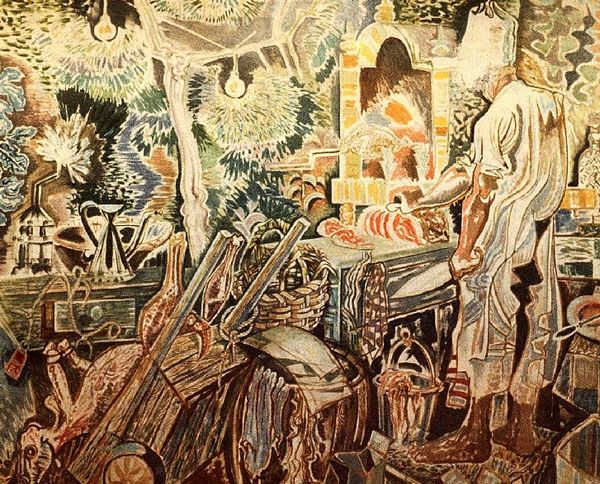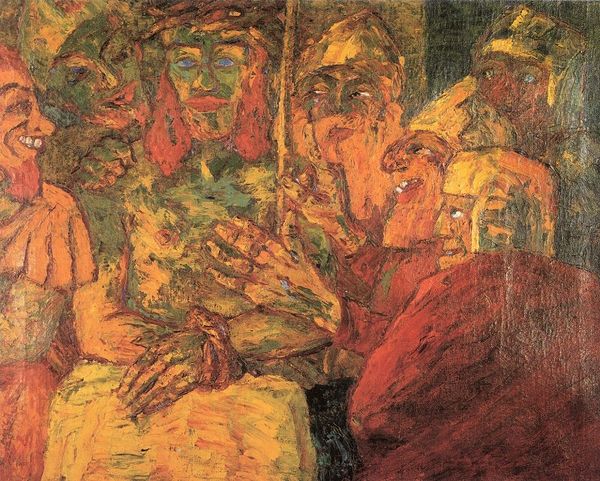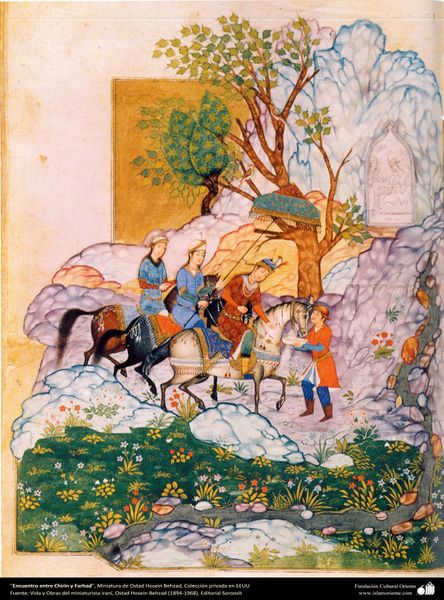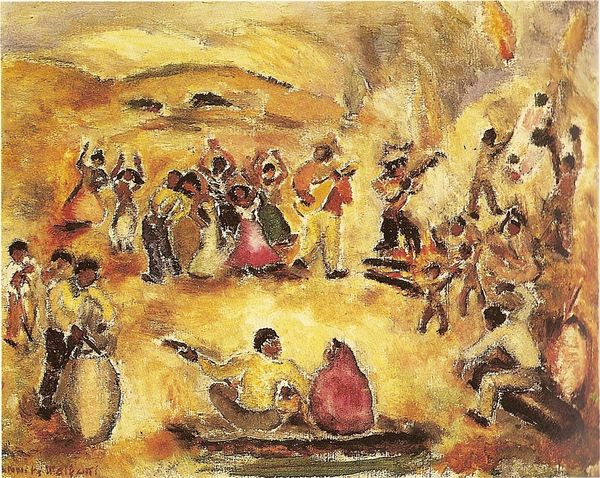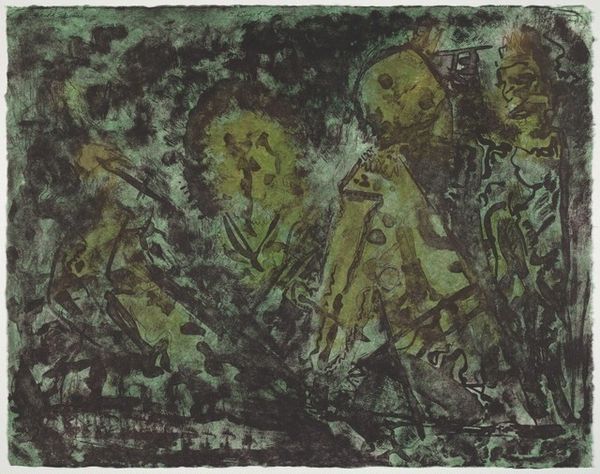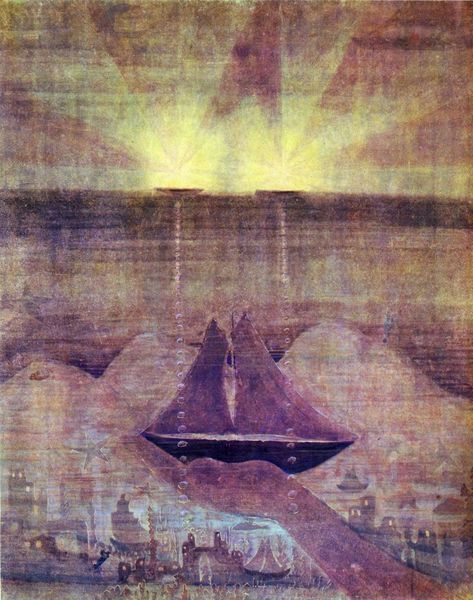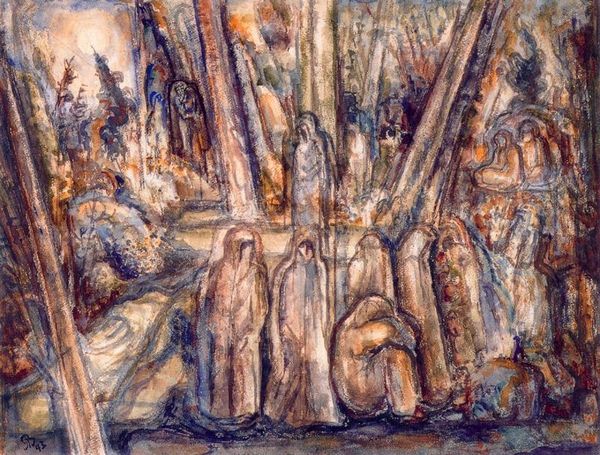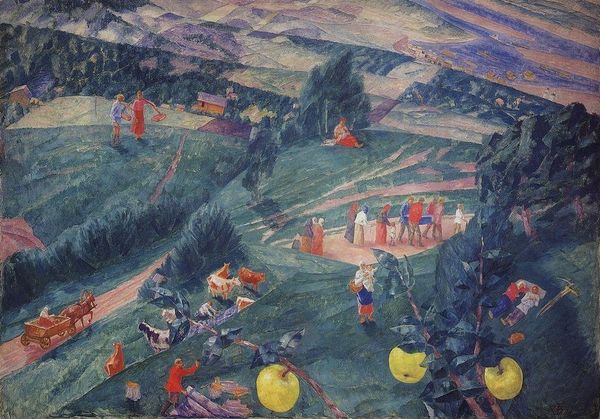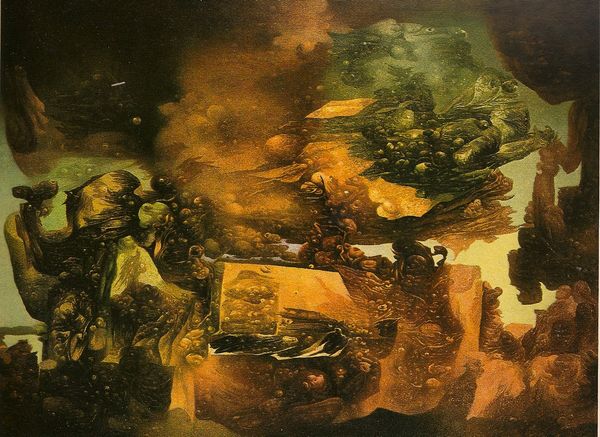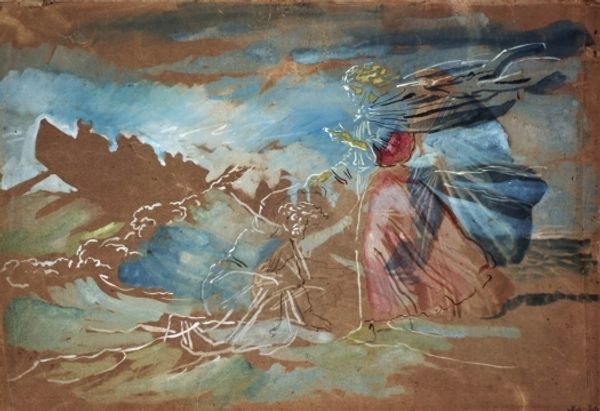
Dancing (Horovod) 1903
nicholasroerich
Bashkirian State Museum of Fine Arts (Nesterov Museum), Ufa, Russia
mixed-media, tempera, painting, gouache, fresco, wood, mural
mixed-media
tempera
painting
gouache
landscape
figuration
fresco
folk-art
symbolism
wood
russian-avant-garde
genre-painting
northern-renaissance
mural
watercolor
Dimensions 12.5 x 16.5 cm
Curator: This mixed-media work by Nicholas Roerich is entitled "Dancing (Horovod)", and dates from 1903. What is your immediate impression of the artwork? Editor: My eye is drawn to the central ring of figures; their whiteness stark against the earth-toned landscape. It feels like a ritual, perhaps, but shrouded in a mysterious, almost ethereal light. Curator: Yes, I think your read on it is quite compelling, seeing it as a ritual—because Roerich was deeply immersed in Russian folklore and spirituality at this time. If you think about it, these interests are rooted in broader political themes of nationalism, and, ironically, a rejection of imperial modernization at the turn of the century. This search for an authentic identity outside state definitions is expressed in the symbolism, palette, and subjects here. Editor: Definitely. The circle, as a central organizing principle, holds deep symbolic weight in various cultures. It speaks of unity, eternity, and cyclical time, ideas prominent in early spiritual movements. I see a contrast between the kinetic energy of the dancers and the stillness of those figures above them, perhaps elders. Does this choice reflect generational roles, or a cultural hierarchy of some sort? Curator: Indeed! The seated figures resonate with Roerich's belief in ancient wisdom. The dancers are then performing or re-enacting those stories and truths in real time. Editor: Looking closer, their simple white clothing amplifies the collective experience. No individual adornments, just pure form and movement contributing to the communal spirit. It's as if they become archetypes themselves. Curator: Precisely. This piece exists as a meditation on identity as both individual and communal at a fraught moment for many peripheral nations looking for autonomy. Editor: For me, it’s fascinating how Roerich evokes ancient beliefs in a seemingly modern visual language. A kind of reclamation of ancestral wisdom through visual storytelling. Curator: Roerich prompts a broader contemplation of art’s function as a space to celebrate identity against narratives of dominance. Editor: And I think that contemplation also makes you want to learn about your own history, your own figures and rituals, to connect the dots. Thanks!
Comments
No comments
Be the first to comment and join the conversation on the ultimate creative platform.
